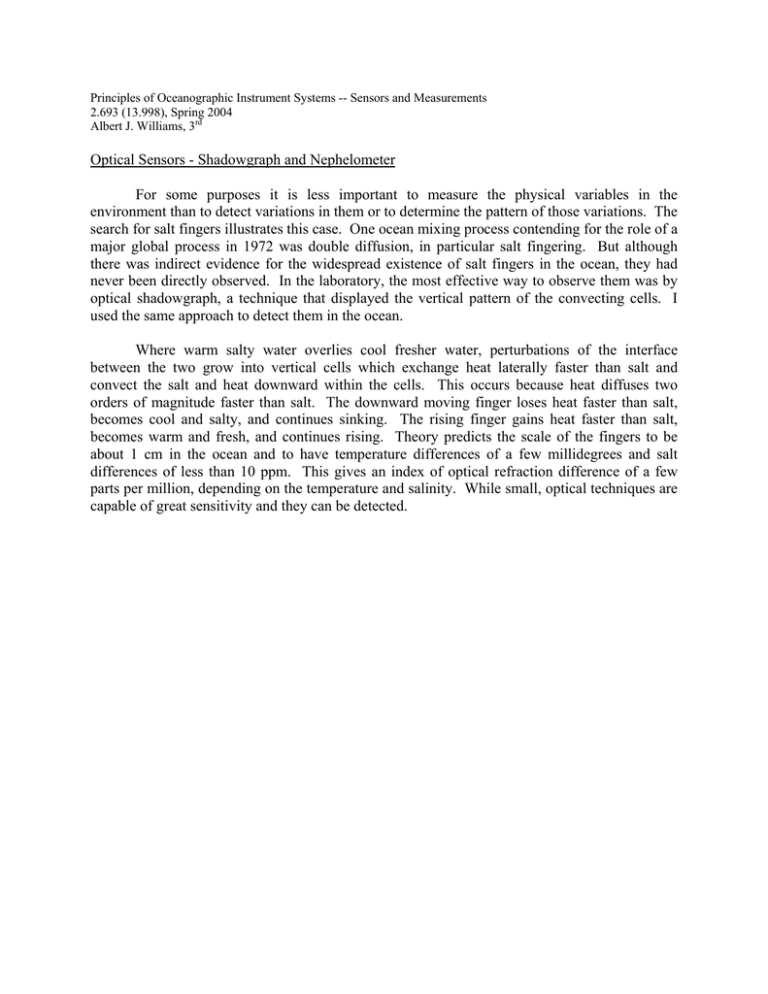Principles of Oceanographic Instrument Systems -- Sensors and Measurements
advertisement

Principles of Oceanographic Instrument Systems -- Sensors and Measurements 2.693 (13.998), Spring 2004 Albert J. Williams, 3rd Optical Sensors - Shadowgraph and Nephelometer For some purposes it is less important to measure the physical variables in the environment than to detect variations in them or to determine the pattern of those variations. The search for salt fingers illustrates this case. One ocean mixing process contending for the role of a major global process in 1972 was double diffusion, in particular salt fingering. But although there was indirect evidence for the widespread existence of salt fingers in the ocean, they had never been directly observed. In the laboratory, the most effective way to observe them was by optical shadowgraph, a technique that displayed the vertical pattern of the convecting cells. I used the same approach to detect them in the ocean. Where warm salty water overlies cool fresher water, perturbations of the interface between the two grow into vertical cells which exchange heat laterally faster than salt and convect the salt and heat downward within the cells. This occurs because heat diffuses two orders of magnitude faster than salt. The downward moving finger loses heat faster than salt, becomes cool and salty, and continues sinking. The rising finger gains heat faster than salt, becomes warm and fresh, and continues rising. Theory predicts the scale of the fingers to be about 1 cm in the ocean and to have temperature differences of a few millidegrees and salt differences of less than 10 ppm. This gives an index of optical refraction difference of a few parts per million, depending on the temperature and salinity. While small, optical techniques are capable of great sensitivity and they can be detected.



